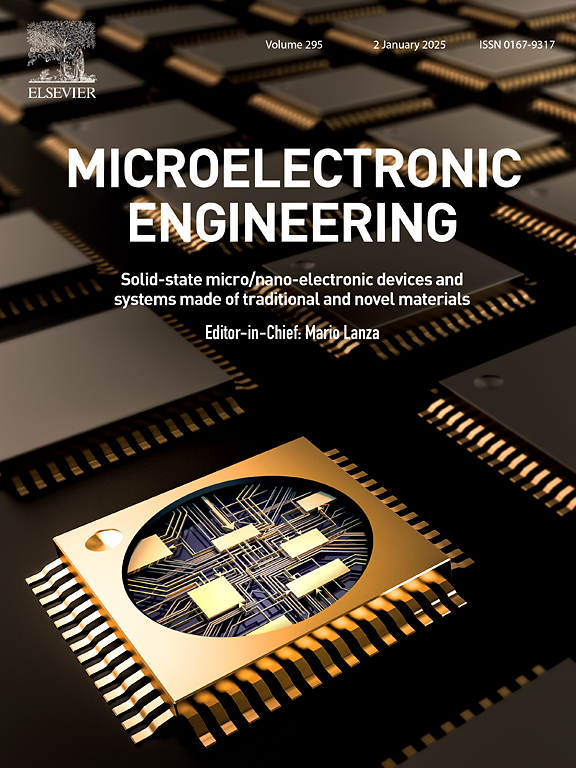The role of etching gas purity in C4F8/Ar plasma to optimize SiO2 etching process
IF 3.1
4区 工程技术
Q2 ENGINEERING, ELECTRICAL & ELECTRONIC
引用次数: 0
Abstract
The relentless miniaturization of critical feature sizes in integrated circuits has set increasingly stringent demands on the precision of via etching processes. Current research predominantly focuses on the development of gases and optimization of processes. However, the role of etching gas purity and the impact of gas impurities have not yet been the subject of dedicated studies. Here, the etching behavior of silicon dioxide using two different purities of etching gases is investigated, examining the etching rate and morphology of SiO2 films under identical etching parameters. Compared to 99.999 % purity, the 99.99999 % purity C4F8 gas achieves a more stable and uniform etching rate with sidewall angles of 86.6° (closer to a 90° angle). This is primarily attributed to the reduction of etch-active impurities in the C4F8 gas, which decreases etching variability and minimizes damage to the sidewall fluorocarbon protective layer. Our research provides theoretical and experimental support for the advancement of subsequent etching simulation studies and the application of high-purity etching gases.

C4F8/Ar等离子体中蚀刻气体纯度对SiO2蚀刻工艺优化的作用
集成电路中关键特征尺寸的不断小型化对蚀刻工艺的精度提出了越来越严格的要求。目前的研究主要集中在气体的开发和工艺的优化。然而,气体纯度对蚀刻的作用和气体杂质的影响尚未得到专门的研究。本文研究了两种不同纯度的蚀刻气体对二氧化硅的蚀刻行为,在相同的蚀刻参数下考察了SiO2薄膜的蚀刻速率和形貌。与纯度为99.999%的C4F8气体相比,纯度为99.99999%的C4F8气体在侧壁角为86.6°(接近90°角)时获得了更稳定和均匀的蚀刻速率。这主要是由于C4F8气体中蚀刻活性杂质的减少,从而降低了蚀刻的可变性,并最大限度地减少了对侧壁氟碳保护层的损害。我们的研究为后续蚀刻模拟研究和高纯度蚀刻气体的应用提供了理论和实验支持。
本文章由计算机程序翻译,如有差异,请以英文原文为准。
求助全文
约1分钟内获得全文
求助全文
来源期刊

Microelectronic Engineering
工程技术-工程:电子与电气
CiteScore
5.30
自引率
4.30%
发文量
131
审稿时长
29 days
期刊介绍:
Microelectronic Engineering is the premier nanoprocessing, and nanotechnology journal focusing on fabrication of electronic, photonic, bioelectronic, electromechanic and fluidic devices and systems, and their applications in the broad areas of electronics, photonics, energy, life sciences, and environment. It covers also the expanding interdisciplinary field of "more than Moore" and "beyond Moore" integrated nanoelectronics / photonics and micro-/nano-/bio-systems. Through its unique mixture of peer-reviewed articles, reviews, accelerated publications, short and Technical notes, and the latest research news on key developments, Microelectronic Engineering provides comprehensive coverage of this exciting, interdisciplinary and dynamic new field for researchers in academia and professionals in industry.
 求助内容:
求助内容: 应助结果提醒方式:
应助结果提醒方式:


